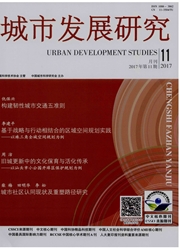

 中文摘要:
中文摘要:
借助于经济地理学的理论视角,使用城市引力模型对十大城市群“圈层”结构进行测度,然后对城市群“圈层”结构降低能源强度的影响程度及其时空差异进行分析。结果显示,成熟的城市群和适度的“圈层”结构更容易降低能源强度。从空间维度上看,东部城市群“圈层”结构显著降低了能源强度,但在0.45边界标准之后,降低能源强度程度明显变小。中西部城市群“圈层”结构降低能源强度程度小于东部城市群,大部分结果仅在10%水平上显著。从时间维度上看,相机抉择使得政府节能减排战略未能实现预期目标,短期内弱化了“圈层”结构降低能源强度效果。控制行政分割等变量发现,政府干预更容易凸显拥挤效应的约束作用,借助市场和空间的力量更有利于节能减排目标的实现。
 英文摘要:
英文摘要:
This paper build an empirical model to analysis the impact of “circle-layering” economy structure to energy intensity with the gravity model. The results show compliance spatial structure system and “circle-layering” economy structure can significantly reduce energy intensity. The “circle-layering” economy structure in Eastern can significantly reduce energy intensity than Central and Western urban agglomerations,but congestion effects appear to weaken the effect after 0. 45 border standards. The discretionary policy has not achieved the energy conservation strategies and weakened the effect of “ circle” structure to reduce energy intensity in the short term.
 同期刊论文项目
同期刊论文项目
 同项目期刊论文
同项目期刊论文
 Research on the energy-saving and revenue sharing strategy of ESCOs under the uncertainty of the val
Research on the energy-saving and revenue sharing strategy of ESCOs under the uncertainty of the val 期刊信息
期刊信息
